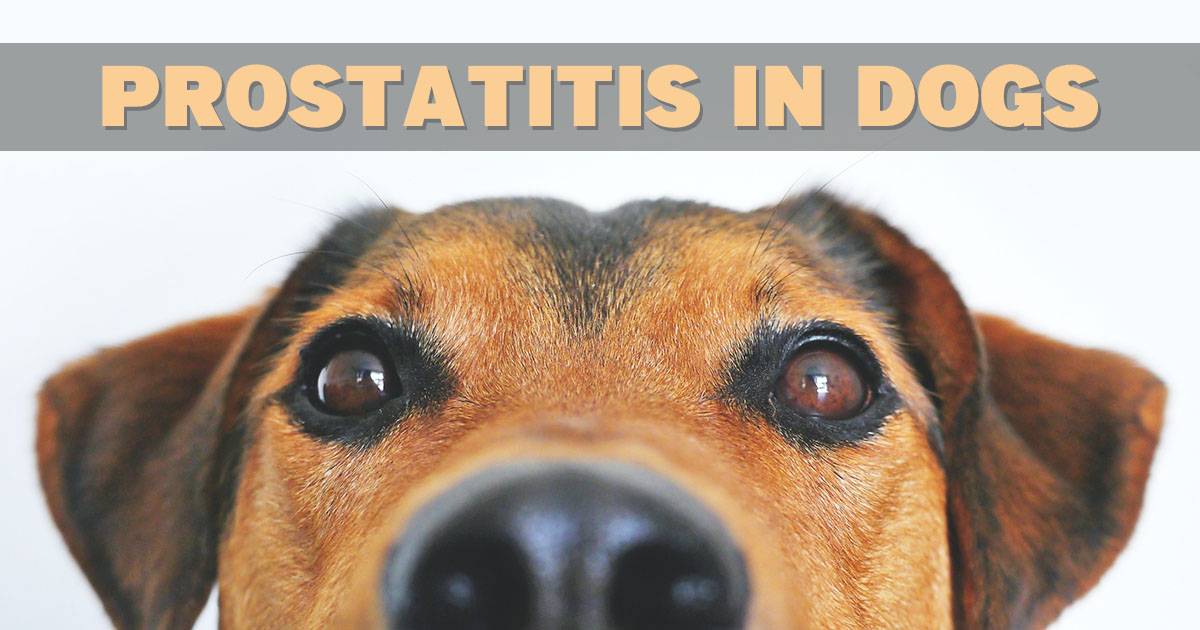Prostatitis in Dogs: Prevention and Care

Prostatitis in dogs is a crucial health concern that warrants the attention of every pet parent. This ailment targets the male dog’s prostate gland and carries substantial consequences for their overall health. Within this piece, we will delve into the nuances of prostatitis, providing a comprehensive understanding of this vital issue to empower you in providing optimal care for your beloved four-legged companion.
What is the Prostate?
Situated in close proximity to the urinary bladder’s neck, the prostate gland is a compact organ within the male canine anatomy. The tube that carries urine from the bladder to the outside world is called the urethra. It passes through the prostate as it leaves the bladder. This gland plays a pivotal role in semen production by contributing certain fluids to the composition.
What Causes Prostatitis in Dogs?
In male dogs, prostatitis occurs when the prostate gland becomes inflamed or infected. This is more likely in dogs that haven’t been neutered. The prostate gland is a compact, walnut-sized organ located just beneath the bladder in male dogs.
Prostatitis can affect dogs of all ages, though it tends to be more prevalent in older male dogs. There are different kinds of prostatitis in dogs, and each has its own signs:
- Sudden prostatitis or Acute prostatitis happens quickly and is usually because of a bacterial infection.
- Long-lasting prostatitis, called Chronic prostatitis, develops slowly and is often linked to other health issues like a big prostate or prostate cancer in dogs.
Symptoms of Prostatitis in Male Dogs
Prostatitis can make dogs feel different, and the signs can change based on how bad it is. However, there are typical signs you may observe:
- Trouble peeing or pooping
- Needing to pee a lot
- Pee with blood in it
- Feeling hurt or uncomfortable around the hips
- Being tired or sad
- Not wanting to eat and getting skinnier
- Having a high body temperature (fever)
- Walking in a stiff or painful way
If you see these signs in your dog, talk to your vet right away. If your dog has a fever or has a hard time walking, it could mean they have a serious case of prostatitis, and they might need quick help from the vet.
What are the Treatment Options?
The right dog’s prostate infection treatment depends on their diagnosis. If your dog has problems because of too many hormones (like BPH, squamous metaplasia, or cystic hyperplasia), the vet might recommend neutering your dog. Neutering means taking out the testicles, which make hormones like testosterone and estrogen. This usually helps a lot. Following the operation, the prostate typically returns to its regular size within approximately one month. In some cases, the vet might also give your dog special medicines or hormones like finasteride (Proscar®, Propecia®) or megestrol acetate (Ovaban®, Megace®) to treat specific prostate problems.
For diseases caused by bacterial infections, strong antibiotics need to be used for a long time. Because it’s hard for antibiotics to get into the prostate, treatment usually takes several weeks or even months. Several antibiotics are effective, including enrofloxacin (Baytril®), erythromycin (Gallimycin®, Erythro®), clindamycin (Antirobe®, Cleocin®), ciprofloxacin (Cipro®), chloramphenicol (Chloromycetin®, Viceton®), and trimethoprim-sulfonamides (Bactrim®, Septra®). Each of these medicines have side effects and benefits. Prostate infections often happen because of another disease, so treating the prostate infection is just one part of the treatment.
When dogs have primary prostate cancer, the usual treatments don’t work very well. But if the tumor is linked to too much of a hormone, neutering can help. In certain cases, targeted radiation therapy or specific chemotherapy medications could be beneficial, depending on the tumor’s nature. Non-steroidal anti-inflammatory drugs (NSAIDs) such as piroxicam (Feldene®) or meloxicam (Metacam®) might contribute to extending the dog’s lifespan. Still, the outlook for dogs with prostate cancer is usually not very good.
How to Prevent Prostatitis in Dogs
Proactively safeguarding your dog against prostatitis is of paramount importance, and you can achieve this through the following measures:
- Regular Prostate Gland Check: Consistent veterinary examinations that include prostate gland assessments are essential. Your vet will carefully monitor your dog’s prostate health, identifying any initial indications of issues.
- Maintaining a Healthy Weight: It’s vital to make sure your dog maintains a healthy body weight. Extra weight can stress the prostate and heighten the prostatitis risk. Managing weight through a well-balanced diet and controlled portion sizes can be really helpful.
- Neutering for Intact Males: Neutering intact (uncastrated) males can significantly decrease the chances of prostatitis. This procedure reduces hormone-related issues that can lead to prostate problems.
- Regular Exercise and Balanced Diet: Incorporating regular exercise into your dog’s routine and providing a well-balanced diet can contribute to overall health, including the well-being of the prostate gland. Exercise helps maintain circulation and muscle tone, while a nutritious diet supports the body’s vital functions.
- Veterinary Wellness Checkups: Regular checkups with your veterinarian serve as an invaluable preventive measure. They not only oversee the condition of the prostate but also identify any potential health problems in their early stages, thus averting their progression into more severe conditions.
By following these steps, you can proactively protect your dog from the distressing and potentially serious condition of prostatitis, ensuring their overall well-being and longevity.
Knowing All About Prostatitis in Dogs for Earlier Prevention
In order to secure the health and happiness of your cherished canine companion, take a proactive stance against the threat of prostatitis. Regular veterinary checkups, maintaining a healthy weight, neutering uncastrated males, promoting exercise and a balanced diet, and diligently monitoring your dog’s well-being are the keys to prevention. By implementing these simple yet vital steps, you not only safeguard your furry friend from the potential perils of prostatitis but also ensure a longer, healthier life filled with joy and companionship.
